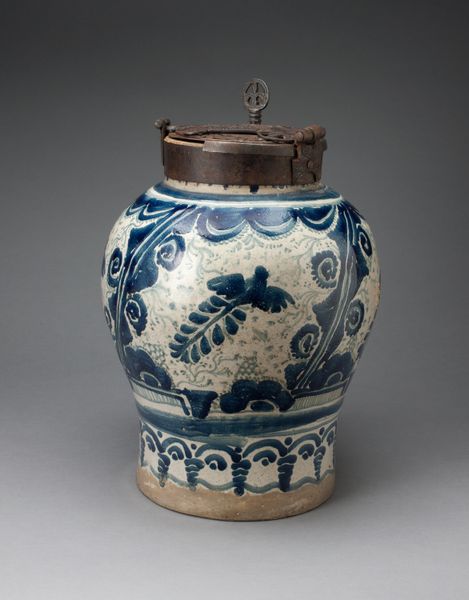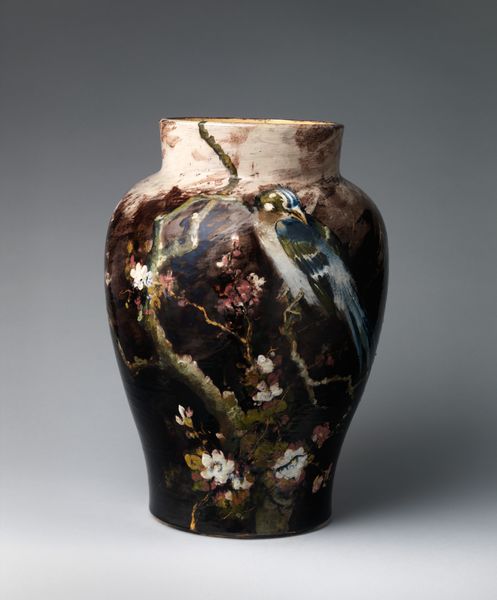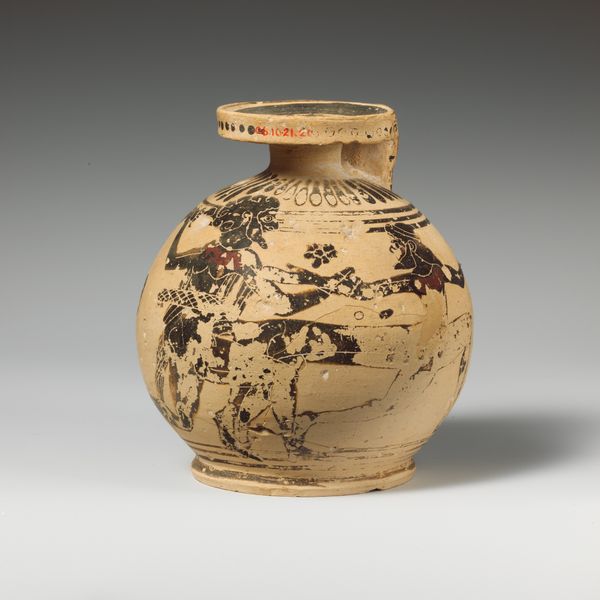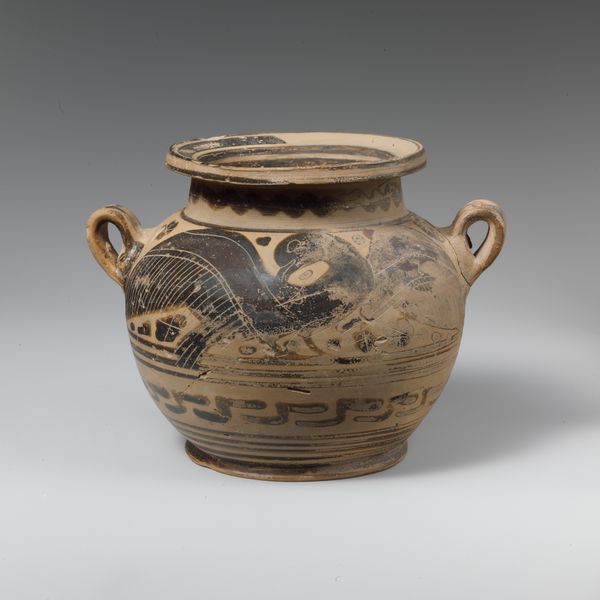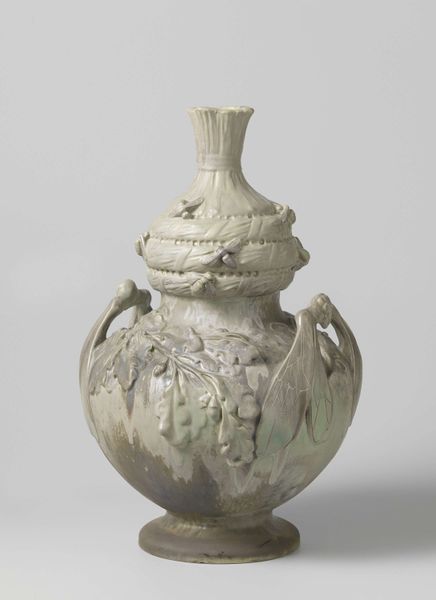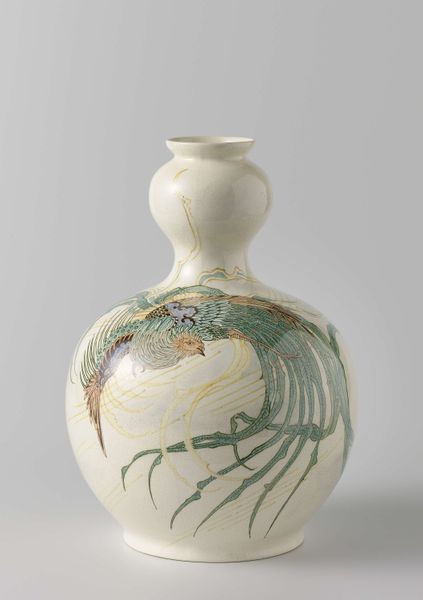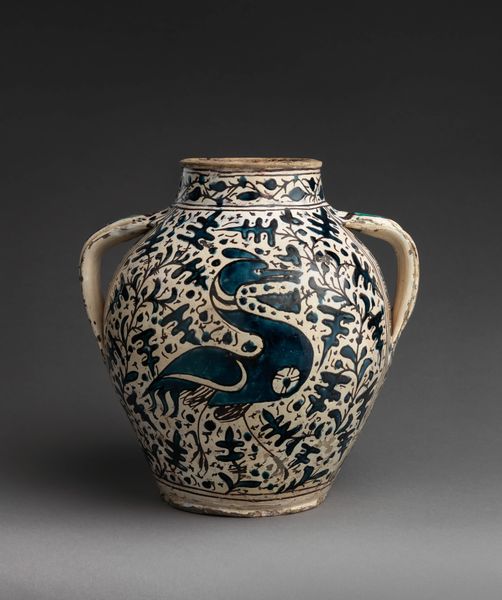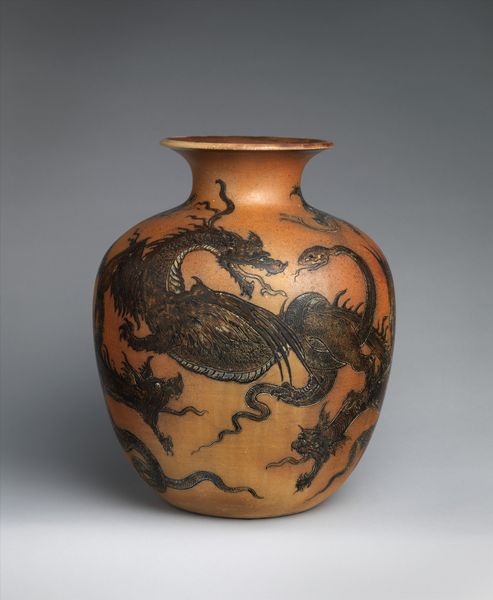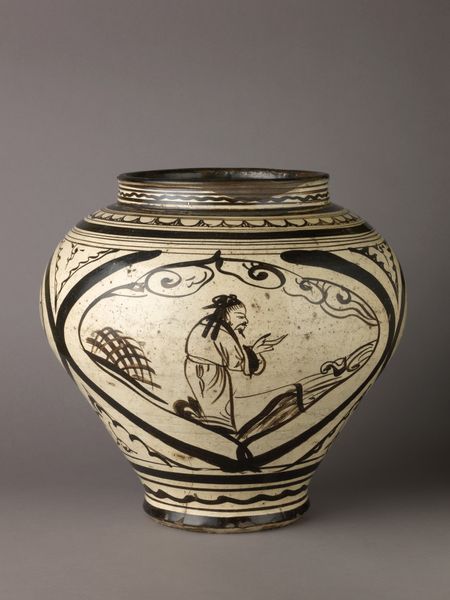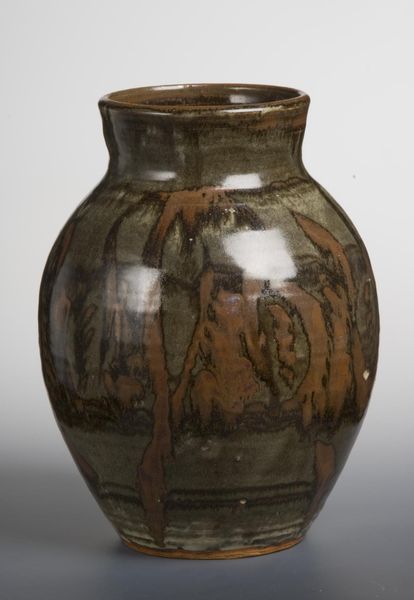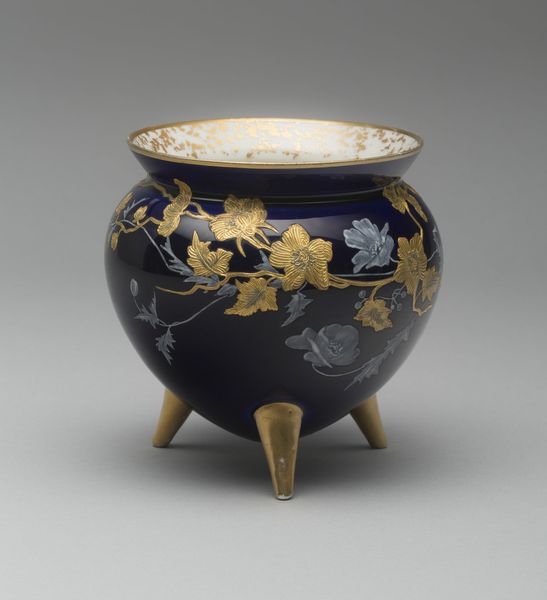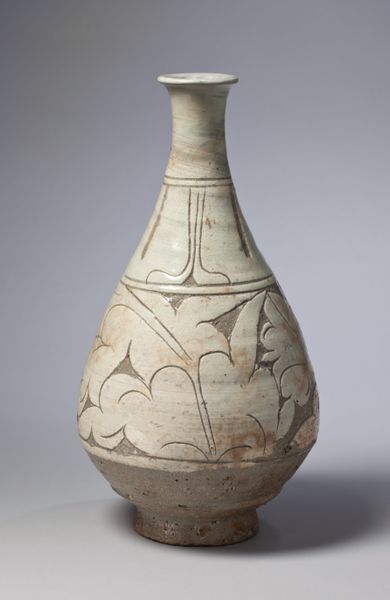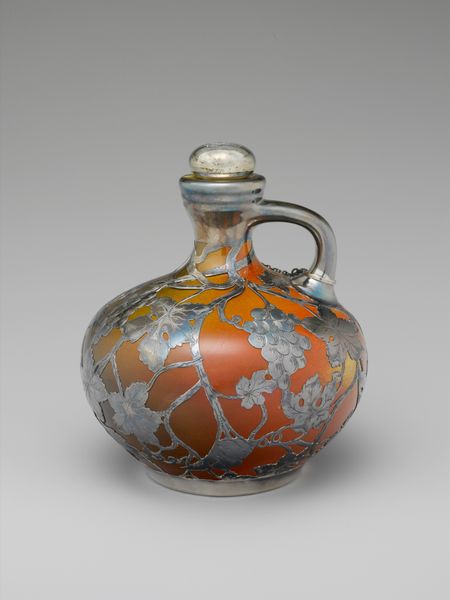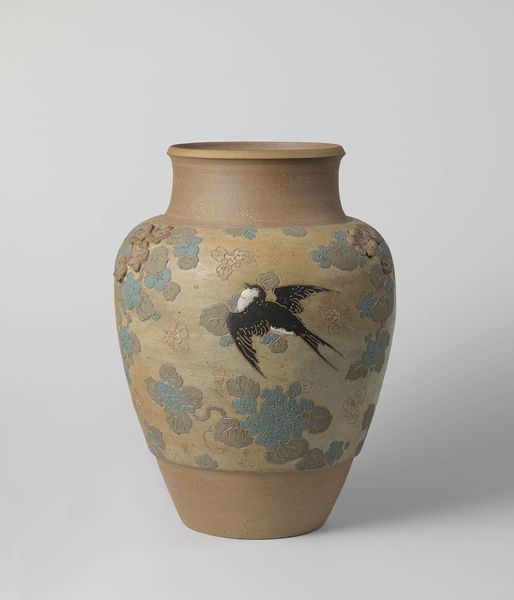
ceramic, earthenware, sculpture
#
asian-art
#
ceramic
#
figuration
#
earthenware
#
stoneware
#
sculpture
#
orientalism
#
ceramic
Dimensions: height 32.5 cm, width 31.3 cm
Copyright: Rijks Museum: Open Domain
This is a glazed stoneware vase by Ernest Chaplet. Observe how its overall form, with its spherical body, combines a sense of stability and contained energy. The vase's surface is divided into contrasting dark and light areas, creating a dynamic interplay between positive and negative space. Notice the textured glaze, with mottled patterns suggesting organic processes. These textural elements complicate our perception of the vase as a purely aesthetic object. The central motif is a fish, rendered with strong lines and a semi-abstract style, this stands out against the more amorphous background, creating a focal point that invites closer inspection. The fish can be interpreted as a signifier of transformation. Chaplet manipulates the material properties of the stoneware to challenge traditional notions of the decorative arts. The rough texture and uneven glaze disrupt the conventional expectations of smooth, flawless surfaces, inviting a reevaluation of beauty and value in art. This challenges viewers to engage with the vase not just as a functional item, but as a site of artistic experimentation.
Comments
rijksmuseum about 2 years ago
⋮
The decorations on this vase refer to the sea. Both sides feature fish, inspired by Japanese prints. The handles are infants, and around them seaweed and shells. The coloured decoration was produced using an experimental technique in which randomly produced patterns were embellished in the glaze. Edouard Dammouse, a key painter at Ernest Chaplet’s workplace applied the decoration.
Join the conversation
Join millions of artists and users on Artera today and experience the ultimate creative platform.
